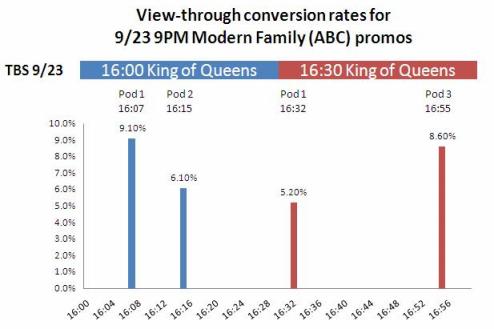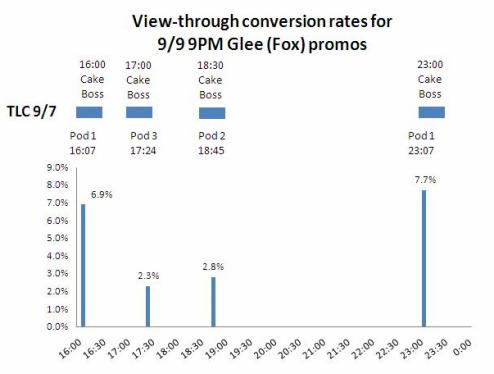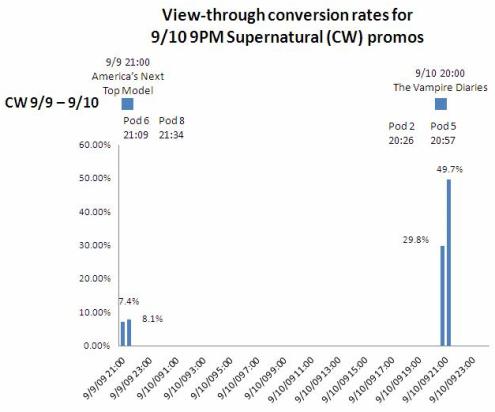Simulmedia: Lessons Learned from Promo Positioning - Yuliya Torosjan - MediaBizBloggers

The potential of any promotional message to deliver viewers to a program is governed by myriad factors. The composition of the audience seeing the promo, the number of times the audience has seen it before, and the amount of time from the promotion to the program all combine to determine the effectiveness of a single promotional spot.
Our recent work focuses on more of these factors influencing promotional effectiveness. As has been previously discussed, we find a strong lead-in effect. We also confirm that promos placed in the first commercial break (pod), as well as those in the last pod tend to be most effective.
The Serial Position Effect first documented by a German psychologist Hermann Ebbinghaus may help explain why, all other factors being equal, promo position within a carrier program has an important effect on subsequent response rates.
Ebbinghaus found that people are better at recalling items from the beginning ("primacy effect") and end ("recency effect") of a list rather than the middle. Primacy effect is attributed to the fact that the short-term memory is less crowded by additional items and more attention may be dedicated to processing the first item and storing it in the long term memory. Recency effect is explained by the easy retrieval of the last item still from a short-term memory.
In our study we compared tune in rates in response to promotions placed at different points within the same carrier program. In the chart below we present tune in rates to the September 23, 2009 premiere of ABC's Modern Familyas a function of promotional exposure in different spots within The King of Queens on TBS earlier the same day.

As we can see, the spots at 4:07pm and 4:55pm outperformed other spots within The King of Queens. The King of Queens at 4:07pm spot is placed in the first pod of the program. The higher response rate for the viewers exposed to the promo within this spot may be explained by the primacy effect. The 4:55pm spot is placed in the last pod of the program and leads in to a Friends episode at 5pm. Thirty-six percent of the 4:55pm spot viewers tuned in to Friendsat 5pm. Interestingly, only one-third of the audience exposed to the promotion at 4:07pm overlaps with the audience that saw the promo at 4:55pm. Most of the audience at 4:55pm is a fresh pool of viewers who are exposed to theModern Family promo for the first time within their The King of Queens viewing session. Therefore, the primacy effect again may be used to explain the higher subsequent tune in to the promoted program.
In another example below, we compared tune in rates to the first episode of Glee on FOX after promo exposure on TLC's Cake Boss two days prior. Once again the promo positioning within the first pod proves to be advantageous.
Not surprisingly, the response rates to promotions directly leading in to the program on the same network are the highest. However, this might be in equal measure attributed to the recency effect of promotions and to the fact that the viewers are available on the network at the right time and would tune in to the program anyway.
The data reported here is based on a nationally projectable dataset of DirecTV subscribers from TNS Infosys.
Yuliya can be reached at Yuliya@simulmedia.com.
Read all Yuliya's MediaBizBloggers commentaries at Simulmedia - MediaBizBloggers.
Follow our Twitter updates @MediaBizBlogger




